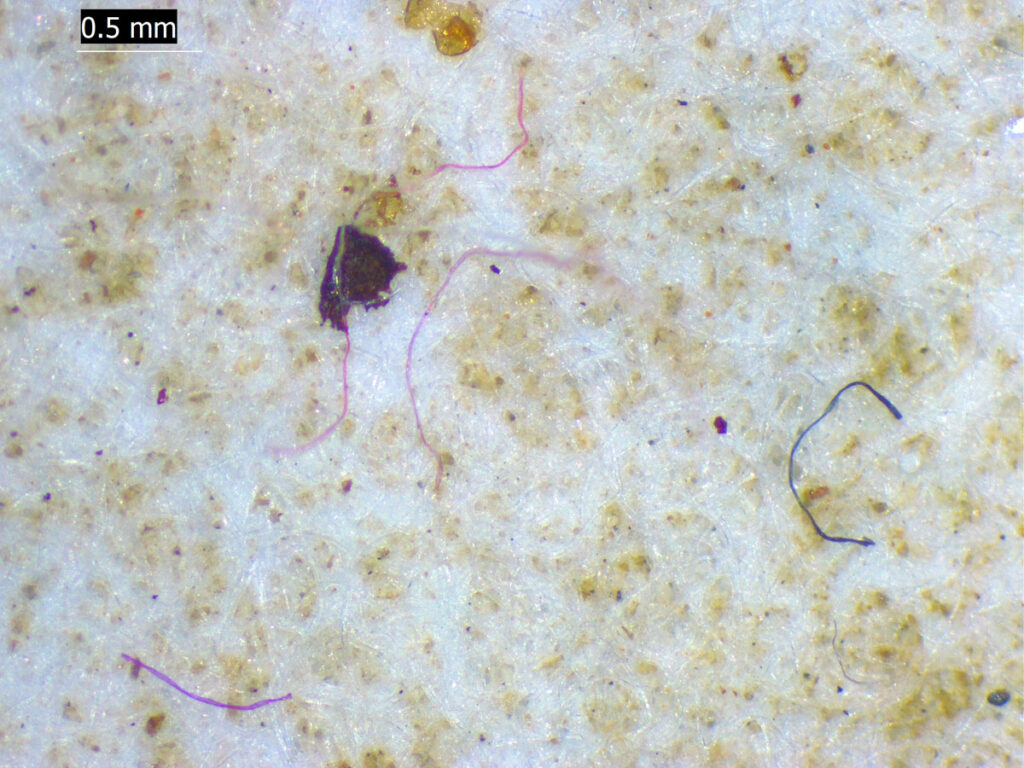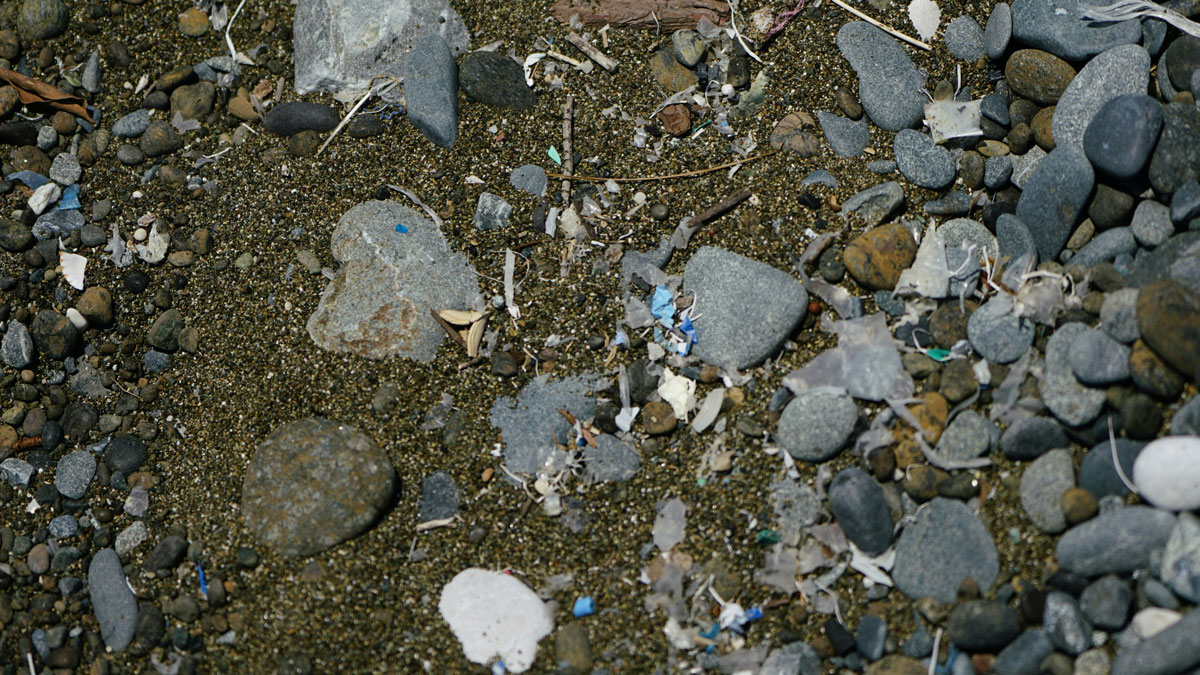Earth’s oceans are full of plastic. Though the state-sized garbage patches formed by ocean currents are the most visible, just an estimated 1% of ocean plastic lurks on the surface. The other 99% hides elsewhere in the ocean and may be found in the deep sea, mixed in with seafloor sediment. These particles are often in the form of microplastics: fragments of plastic goods degraded to less than 1 millimeter in length.
Scientists know these deep-sea plastics don’t get there by simply sinking from the surface since their distribution doesn’t match the locations of surface garbage patches. Results of laboratory experiments and seafloor sampling campaigns led scientists to suspect these plastic particles instead reach the deep ocean via turbidity currents, gravity-driven cascades of sediment-rich water that flows from rivers over the continental shelf and down to the seafloor. But no one had observed the process until now.
A new study published in Environmental Science and Technology presents the first direct evidence of an underwater microplastics “avalanche,” a turbidity current that transported plastic pollution to the bottom of a deep ocean canyon. The findings raise concerns about how microplastics may be affecting marine organisms because the same turbidity currents foster biodiversity hot spots in the same locations.
“The fact that we captured this in action proves the theory, but it also highlights the threats that microplastics pose.”
“Turbidity currents are an important process that transports sediments and nutrients to the deep sea. The question was: Do they also transport plastics?” said Florian Pohl, a sedimentologist at the University of Bayreuth in Germany who was not involved in the research. Pohl was the lead author on a 2020 study that predicted the existence of these microplastics “avalanches” using laboratory experiments.
“The fact that we captured this in action proves the theory, but it also highlights the threats that microplastics pose,” said Ian Kane, a coauthor of the new study and a sedimentologist at the University of Manchester. “This study is further evidence of the impact that we’re having on the oceans.”
Measuring Microplastics
To observe turbidity currents in action, the research team headed to Whittard Canyon, an undersea canyon in the Celtic Sea nearly 4 kilometers (2.5 miles) deep. They installed sensors in the canyon that could measure turbidity current velocity and detect sediment concentration.
The team also installed a sediment trap just above the seafloor to collect material transported by the turbidity current and drilled cores of seafloor and subseafloor sediment at seven sites at varying depths in the canyon.
Between June 2019 and August 2020, the sensors detected six turbidity currents, the first of which filled the sediment trap. An analysis of flow velocity and sediment grain size showed that the turbidity flow even carried large plastic litter, including segments of plastic fishing line. All sediment trap samples and seafloor sediment cores contained microplastic particles.

Samples of sediment from the cores revealed that the relative proportion of microplastic fragments (tiny plastic “chunks”) to microplastic fibers (from synthetic textiles) increased deeper into the canyon, indicating that fragments and fibers travel differently in turbidity currents. Pohl said he’d like to take a closer look at the fragment and fiber properties (such as the type of plastic they’re made of) to determine why.
Kane was struck by the high concentrations of microplastics found in the sediment, especially because Whittard Canyon is so far from shore—300 kilometers (186 miles). “It’s quite alarming that this material is making its way so far out into ocean basins,” he said.
The microplastics “avalanches” observed in Whittard Canyon likely also happen elsewhere in Earth’s oceans. More than 5,000 similar canyons worldwide could be important conveyors of pollution to the deep sea, the authors wrote. Some of these canyons are fed directly by rivers on land. Seasonal flash floods in Sicily, for instance, have carried large amounts of plastic litter to submarine canyons.
If Whittard Canyon is receiving a lot of plastic, it’s likely that other canyons, especially those more closely linked to rivers on land, are receiving even more, Kane said.
Plastic in the Ecosystem
The new study is a “great first step” in understanding how microplastics reach the deep ocean, Pohl said. “It’s a big piece of the puzzle to understand that these flows do indeed transport microplastics. But now there are follow-up questions, like how much [plastic] do they actually transport? And how does this relate to the overall budget of ocean floor plastics?”
The same turbidity currents that flush microplastics also bring oxygen and nutrients to the deep sea, forming biodiversity hot spots in the same locations where plastic pollution accumulates. That plastic pollution often contains toxic ingredients that are hazardous to marine organisms.
“Magnification through the trophic web is a real danger.”
Filter feeders ingest toxic plastic particles, which accumulate up the marine food chain. “Magnification through the [food] web is a real danger,” Kane said.
Much of the plastic in the ocean enters via waste management systems. Better filtration at wastewater treatment plants could be one important way to reduce the flow of microplastic fibers into the ocean, Kane said, adding that fishing and shipping are also major sources of microplastics to target for mitigation. But microplastic pollution is ubiquitous in the environment, and reducing its presence in the ocean is “a big challenge,” Pohl said.
—Grace van Deelen (@gvd.bsky.social), Staff Writer

